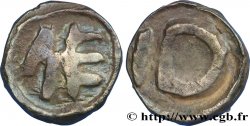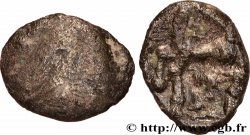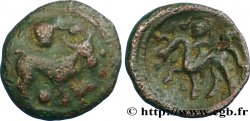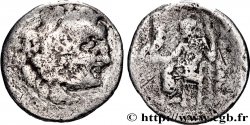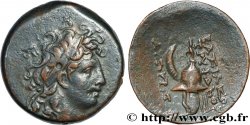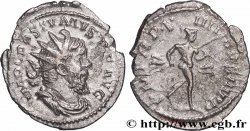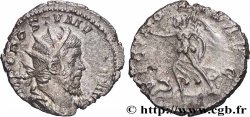bmv_530850 - PAGUS MOSELLENSIS - METTIS - METZ (Moselle) - ANONYMOUS COINAGE Obole à la croisette
недоступный.
Товар уже продан в нашем интернет-магазине (2022)
Цена: : 350.00 €
Товар уже продан в нашем интернет-магазине (2022)
Цена: : 350.00 €
Тип Obole à la croisette
Дата: s.m.
Монетный двор / Город: 57 - Metz
Металл: silver
Диаметр: 12,5 mm
Ориентация осей монеты: 2 h.
Вес: 0,73 g.
Редкость: R3
Комментарии о состоянии
Monnaie sur un flan relativement large et régulier, mais très léger, avec de petits éclatements de frappe. Patine grise avec de très légères concrétions
Ссылки в каталоге: :
Лицевая сторона
Аверс: описание: ME liés dans le champ.
Обратная сторона
Реверс: Описание: D au-dessus d’une barre dans le champ ; une croisette dans le D ; bourrelet périphérique.
Комментарий
Ce denier léger ou obole, correspond au n° 782 de MONNAIES 28. Il est intéressant de noter le poids léger de ces deux exemplaires qui ont le point commun d’avoir une croisette dans le D ; pourait-il s’agir de la marque de l’obole sur ce monnayage ?
D’après Belfort (p. 365), le D dans le champ du revers a été interprété comme l’initiale de Dagobert II ou III (711-715) ou comme celle de Thierry III (720-737) dont le nom est parfois immobilisé sous la forme Dietricks. L’attribution à Metz tient aux nombreuses découvertes de monnaie à ce type dans la région messine. D’autres proposent le D comme abréviation de «denarius» ; les monnaies avec un A dans le champ pourraient alors correspondre à «argenteus».
This light denarius or obol corresponds to number 782 of COINS 28. It is interesting to note the light weight of these two examples which have in common a cross in the D; could this be the mark of the obol on this coinage? According to Belfort (p. 365), the D in the field of the reverse has been interpreted as the initial of Dagobert II or III (711-715) or as that of Thierry III (720-737) whose name is sometimes immobilized in the form Dietricks. The attribution to Metz is due to the numerous discoveries of coins of this type in the Metz region. Others propose the D as an abbreviation of \\\"denarius\\\"; the coins with an A in the field could then correspond to \\\"argenteus\\\"
D’après Belfort (p. 365), le D dans le champ du revers a été interprété comme l’initiale de Dagobert II ou III (711-715) ou comme celle de Thierry III (720-737) dont le nom est parfois immobilisé sous la forme Dietricks. L’attribution à Metz tient aux nombreuses découvertes de monnaie à ce type dans la région messine. D’autres proposent le D comme abréviation de «denarius» ; les monnaies avec un A dans le champ pourraient alors correspondre à «argenteus».
This light denarius or obol corresponds to number 782 of COINS 28. It is interesting to note the light weight of these two examples which have in common a cross in the D; could this be the mark of the obol on this coinage? According to Belfort (p. 365), the D in the field of the reverse has been interpreted as the initial of Dagobert II or III (711-715) or as that of Thierry III (720-737) whose name is sometimes immobilized in the form Dietricks. The attribution to Metz is due to the numerous discoveries of coins of this type in the Metz region. Others propose the D as an abbreviation of \\\"denarius\\\"; the coins with an A in the field could then correspond to \\\"argenteus\\\"







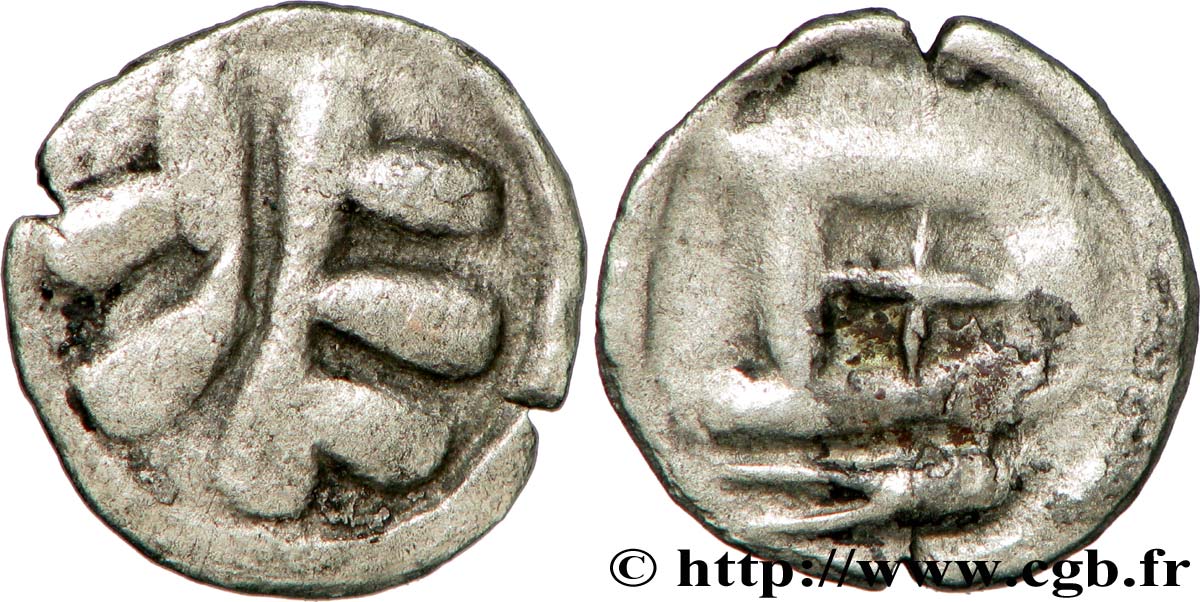
 Cообщить об ошибке
Cообщить об ошибке Распечатать страницу
Распечатать страницу Отправить мой выбор
Отправить мой выбор Задать вопрос
Задать вопрос Consign / sell
Consign / sell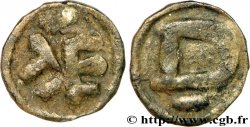
 Информация
Информация